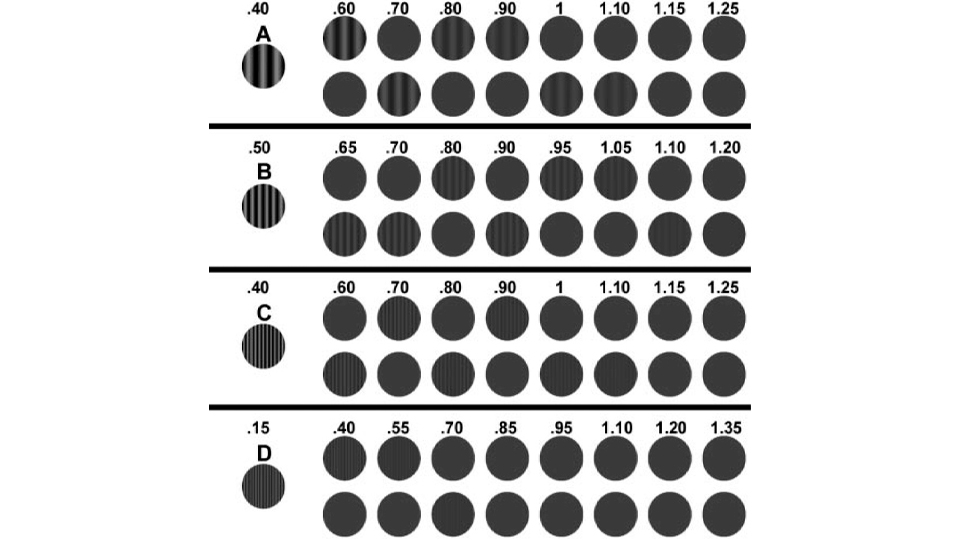All about the skin around the eyes and “drooping” eyelids
04/04/2025

29/08/2022
Contrast sensitivity i sour visual system’s ability to distinguish an object against its background. A contrast sensitivity (CS) measurement determines the lowest contrast threshold that can be detected by the patient for a given stimulus.
A person can have good visual acuity but many nevertheless suffer a loss of contrast sensitivity. This loss would give us information about potential diseases such as glaucoma, maculopathy or cataracts that could go unnoticed in a routine eye test.
The test for this measurement is the CSV-1000 which uses 4 patterns in the shape of circles with light and dark bars of different thicknesses. It is carried out at a distance of two and a half metres and on one eye at a time using distance correction. For each pattern 2 rows of 8 circles appear and the patient has to try to see if the bar pattern is reproduced in the upper or lower circle. Each circle is more difficult (lower contrast) tan the previous one. The test is repeated for the 4 patterns. A contrast sensitivity value and the visual quality is obstained for each of the right and wrong answer.
People with diabetes are predisposed to suffer complications in their eye health such as diabetic retinopathy or macular edema. These conditions may not present symptoms initially and cause irreversible damage, but they can be prevented with ophthalmological check-ups.